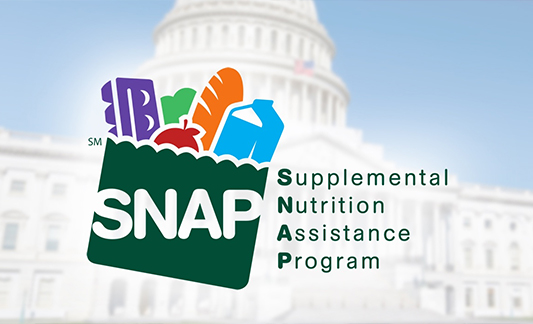Help Isom IGA recover from devasting floods

America is a country divided. Never have passions been so high, on so many topics. But there is one thing most Americans agree on, no matter who they voted for: thank goodness it is over.
This presidential race was about a lot of emotional issues: immigration, abortion, foreign policy, tariffs. But one issue came through loud and clear: the economy. Despite low unemployment, wage rate growth, stock market performance, GPD growth and job creations, the majority of Americans felt like the economy was worse than ever.
And it mostly came down to food.
In the history of modern political elections, it is rare that grocery and restaurant prices have been such a massive factor, perhaps not since the inflation challenges of the 1970s. In poll after poll, voters mentioned food prices as the single biggest example of dissatisfaction in the economy. Not housing, not education, not gas prices, not even medical, but food.
We in the grocery industry have to take a hard look at this message. And let’s be clear, Americans were shouting this message loudly, every time they pulled a lever, filled in a circle, or tapped the box on the screen for the Republicans. “The economy is everything,” quoted The Wall Street Journal on November 6, 2024, and the “everything" in that sentence was often most keenly felt in the cost of feeding your family, up 28% from 2019.
As businesspeople, we know there are a number of factors that have driven food inflation, specifically the long tail hangover of COVID-19. But shoppers are done with pandemic excuses and they want to know why food prices haven’t come down.
If we deconstruct inflation, the answer becomes clear. More than commodity increases, more than labor prices in our stores, more than the cost of insurance or energy, it is transportation that has been the highest component of overall inflation. A gallon of diesel, used to fuel farm equipment and delivery trucks, is up 22% from 2020. The very thing that makes the American food industry so amazing — fresh food, from all over the world, delivered to your store no matter where you live – is the hardest hit in terms of cost increases.
And it's not just long-haul transportation. The cost of local routes are up significantly since 2020, in part due to a shortage of drivers for the grocery industry. Today’s food producers and our distributor partners compete for drivers from Uber and Lyft on one end, and UPS on the other. And with UPS drivers regularly making more than $150,000 a year, don’t expect the driver labor market to become more affordable. E-commerce has driven more demand for drivers than ever before, especially short/local routes.
Unions have been enjoying a resurgence in the last few years, and rising rates have a lot to do with their success. The head of the International Brotherhood of Teamsters spoke at the Republican National Convention in July from the main stage – in years past that would have been like inviting Satan to teach Sunday school!
But the food industry has a role to play here too. Look at the net income percentage growth of many large public companies, retailers and suppliers alike, and you will see much of our industry grew the bottom line faster than inflation. There might be legitimate reasons why that happened, but the possibility that big national retailers and big public CPG companies took advantage of the COVID insanity and raised prices above their costs is likely.
But there is one part of the food industry which did not do that – the local, independently owned grocery chains. Last year our industry-wide net income was well below 2%. If anything, local retailers have been trying to not pass on increases to help their shoppers afford more. And with independent chains like IGA and other independents often over-indexing on WIC and SNAP shoppers, their decision to ‘eat’ cost increases to keep prices low is an example of true local service to low-income families.
A Republican government is likely to reduce or soften onerous legislation that hurts retailers. And we might expect to see more pro-business tax policies. On the negative side, watch out for SNAP to come under fire — again. And be wary of tariffs on imported food products, as they could make costs even higher.
The grocery industry is used to dealing with the ups and downs of each administration, regardless of party. The one unwavering thing is that we continue to serve the underserved, we open and operate stores where big chains fear to tread, and as always, we treat our shoppers with care and respect. And those qualities, no matter who is government, will always prevail.
You May Also Like
These Stories on From the Desk of
Nov 11, 2025 4:09:11 PM |
2 min read
Nov 6, 2025 9:12:29 AM |
3 min read



No Comments Yet
Let us know what you think